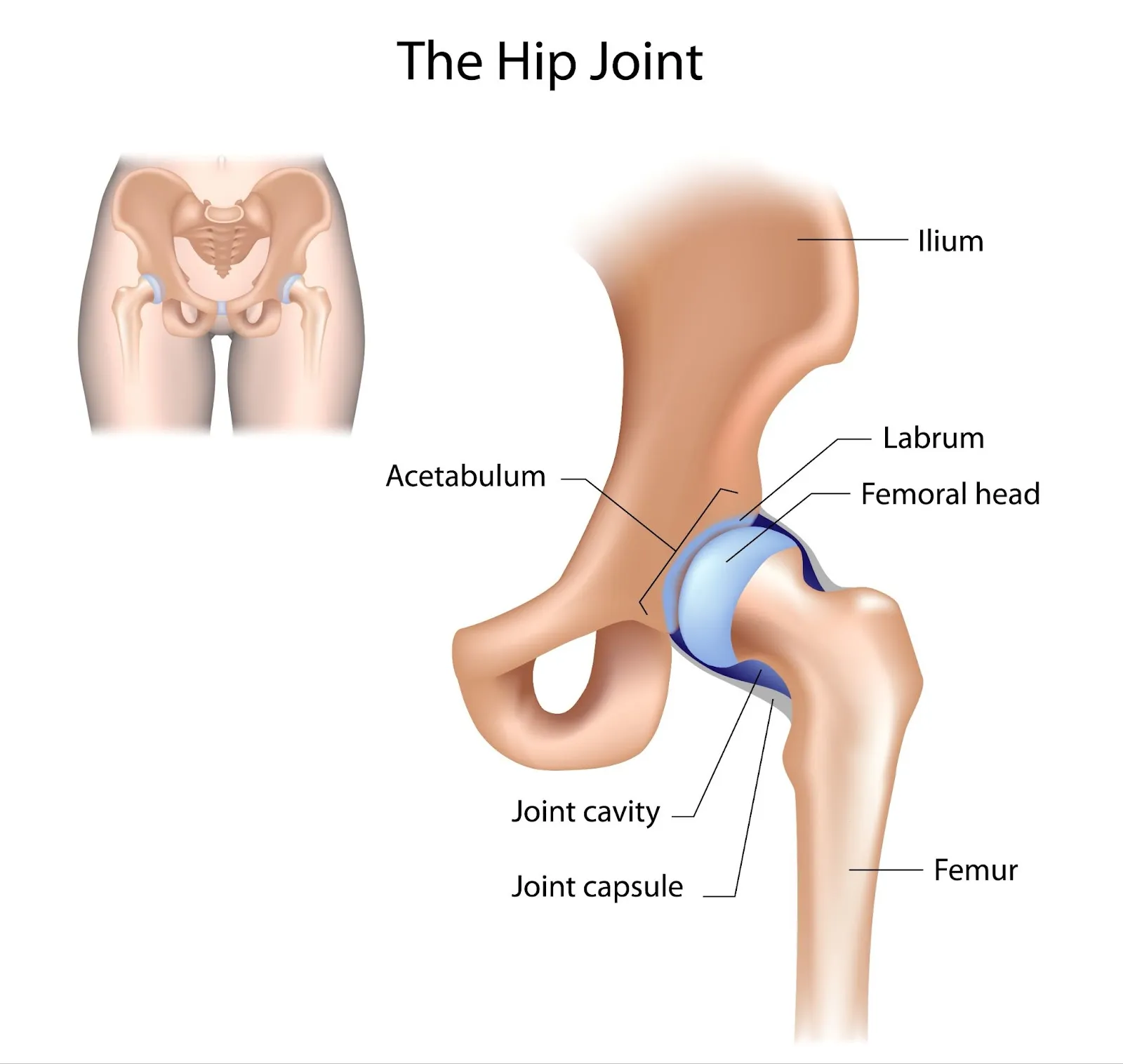Others
Hip Labral Tears
A hip labral tear is a tear to the labrum, the cartilaginous ring that encircles the acetabulum (hip socket).The labrum stabilizes the femoral head and forms a suction seal for fluid pressure within the joint, facilitating movement and shock absorption.
Tears can be caused by acute trauma or repeated wear and tear and can be due to detachment or fraying of the cartilage.Symptoms are groin pain, clicking, catching, stiffness, or decreased range of motion.
Sportspersons involved in repetitive hip flexion and rotation, i.e., dancers, hockey players, or footballers, are at greater risk.Labral tears are commonly linked to underlying hip abnormalities such as FAI (Femoroacetabular Impingement) or dysplasia and can be mistaken for muscle strains on the basis of no imaging.Diagnosis is made with physical exam maneuvers (e.g., FADIR test) and MR arthrogram.
Causes:
- Repeated twisting or pivoting movements in sport.
- Structural abnormalities of FAI or shallow hip sockets (hip dysplasia).
- Direct trauma due to falls or collisions.
- Degenerative changes from arthritis or previous joint injury.

Prevention:
- Strengthen hip stabilizer muscles and core to reduce joint load.
- Avoid repetitive deep hip flexion and rotation if susceptible.
- Address underlying anatomical imbalances through early screening.
- Cross-train to minimize repetitive stress on the same joint.
Benefits of Treatment:
- Conservative care with physical therapy can reduce symptoms and improve mechanics.
- Arthroscopic surgery to debride or repair the labrum restores function.
- Addressing the labral tear often improves joint congruency and reduces early arthritis risk.
- Return to sport typically occurs within 3–6 months with structured rehab.
- Combining labral treatment with FAI correction provides long-term relief and joint preservation.
Treatment Option:
- Hip Arthroscopy with Labral Repair: Suturing torn labrum to restore suction seal and stability.
- Labral Debridement: In non-repairable cases to remove frayed edges.
Hip Arthritis (Osteoarthritis)
Hip osteoarthritis is a degenerative joint disease involving the progressive breakdown of articular cartilage, leading to joint pain, stiffness, and reduced mobility. As the cartilage deteriorates, bones rub together, causing inflammation, osteophyte formation, and joint space narrowing.It is a common condition in older adults but may develop earlier in athletes with previous hip injuries or structural abnormalities like FAI or dysplasia.Symptoms begin gradually with activity-related groin or buttock pain, morning stiffness, reduced walking distance, and difficulty with movements like sitting or climbing stairs.Radiographs reveal joint space narrowing, subchondral sclerosis, and bone spurs, confirming diagnosis.
Causes:
- Age-related cartilage wear and tear.
- Prior trauma or surgery involving the hip.
- Hip dysplasia, FAI, or labral tears causing abnormal stress loading.
- Obesity and repetitive high-impact loading on the joint.

Prevention:
- Maintaining normal weight reduces loading on the joint.
- Exercising in low impact aerobics such as swimming or cycling. Strengthen supportive musculature to reduce loading on the joint.
- Correction of biomechanical issues-early (e.g., orthotics, FAI surgery).
Benefits of Treatment:
- Non-surgical interventions (e.g., NSAIDs, physical therapy, injections) ease symptoms and facilitate activity.
- Viscosupplementation or PRP may be used for biologic joint support.
- Joint-preserving surgery (osteotomy or arthroscopy) in early disease.
- Total Hip Replacement (THR) in advanced disease gives excellent pain relief and returns activity to normal.
- With THR, most patients return to daily activities within 6–12 weeks.
Treatment Option:
- Total Hip Replacement (THR): In advanced osteoarthritis with joint space loss.
- Hip Resurfacing (in young active patients): Bone-preserving alternative.
Femoroacetabular Impingement (FAI)
Femoroacetabular Impingement (FAI) is a mechanical hip disorder due to abnormal contact between the femoral head and the acetabulum.This leads to cartilage and labral injury over a period of time, ultimately resulting in pain, stiffness, and premature osteoarthritis.FAI is of three types: CAM type (femoral neck bony bump), Pincer type (acetabular overcoverage), and mixed type.It usually involves athletes or highly mobile hips.Groin or lateral hip pain classically occurs and increases with prolonged sitting, squatting, or hip flexion.Left untreated, FAI may progress to labral tears and joint degeneration.Diagnosis is established through clinical exams and imaging like X-rays, MRI, or CT scans.
Causes:
- Congenital or developmental bone deformities.
- Repetitive high-impact sports (e.g., hockey, martial arts, football).
- Prior hip injuries altering joint alignment.
- Abnormal femoral or acetabular shape from growth plate disturbances

Prevention:
- Early detection of hip shape abnormalities in adolescents or athletes.
- Avoiding excessive deep squats or hip-loading activities if symptomatic.
- Strength training of glutes and hips to enhance joint control.
- Utilization of individualized training programs to minimize joint overload.
Advantages of Treatment:
- Physical therapy enhances hip mechanics, minimizes symptoms of impingement.
- Hip arthroscopy for bone reshaping and labral repair can avoid arthritis.
- Simultaneous treatment with labral repair has long-term joint preservation.
- Return to sport in 3–6 months after the procedure can be achieved with rehabilitation guidance.
- Reduces groin pain, improves hip flexion and rotational range of motion.
Treatment Option:
- Hip Arthroscopy: Cam and/or pincer resection to correct abnormal bony contact.
- Labral Repair/Chondroplasty: If associated damage exists.
